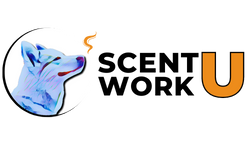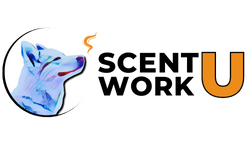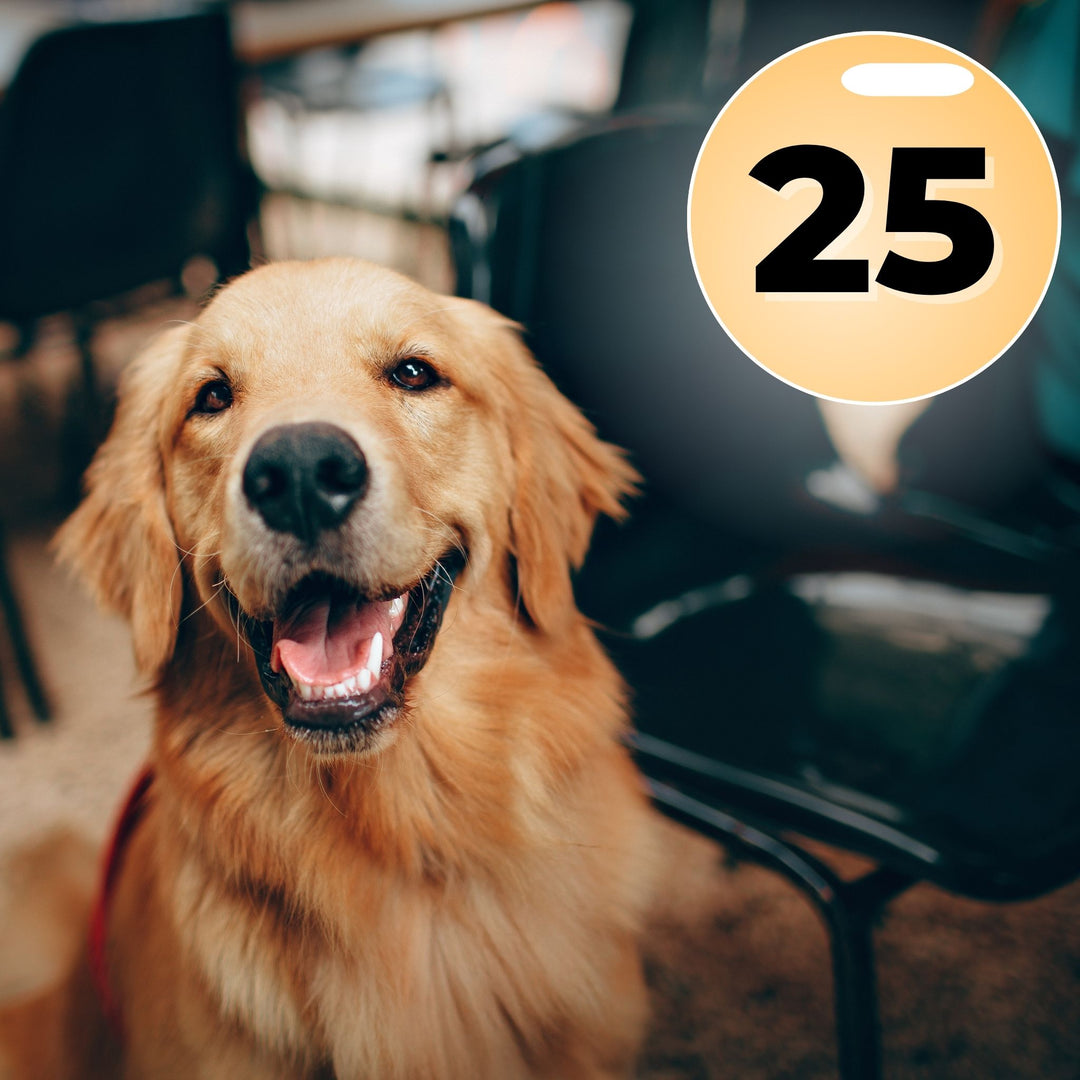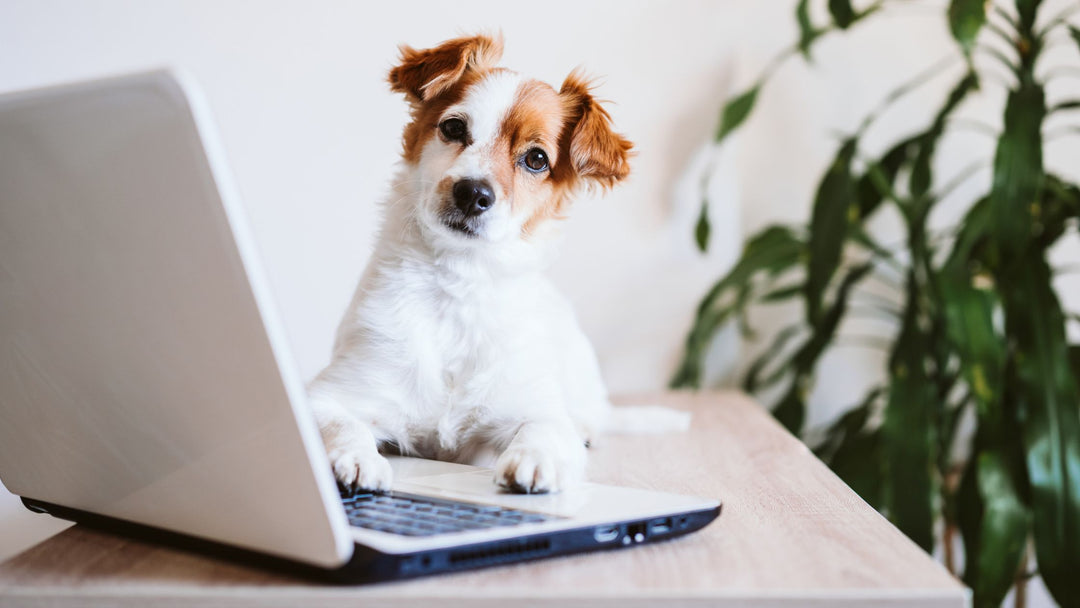Ep. 32: How Smart Dogs Hunt
In Scent Work, we oftentimes harp on our desire for our dog to focus on one thing and one thing alone: the target odor they have been trained to find. But do dogs actually do this? Are they truly discounting the immense amount of information the environment at their disposal? Is doing so not only possible, is it preferable?!
We discuss this and more with Michael McManus in hopes of painting a more honest picture of how smart dogs hunt (and all of our dogs are smart), why that matters and how we may need to adjust our expectations and how we train in response to these realities.
Speakers:
- Dianna L. Santos
- Michael McManus
PODCAST TRANSCRIPT
Dianna L. Santos: Welcome to All About Scent Work Podcast. In this podcast, we talk about all things scent work. That can include training tips, a behind the scenes look of what your instructor or trial official might be going through, and much more. In this episode, we're going to be speaking with Michael McManus about the variety of different things that our dogs may be processing when they're doing a search and how we need to think things through a little bit differently when we're talking about scent work.
Dianna L. Santos: Before we start diving into the episode itself, let me just do a very quick introduction of myself. My name is Dianna Santos. I'm the owner and lead instructor for Scent Work University, Dog Sport University, Canine Fitness University, and Family Dog University. These are online dog training platforms. They're designed to provide high quality dog training instruction to as many people as possible.
Dianna L. Santos: And we're very fortunate to have a client basis for that. In the Scent Work university in particular, we focus on all things scent work. We do this with our online courses, seminars, and webinars, as well as a regularly updated blog and podcast like what you're listening to today. So, now that you know a little bit more about me, let's dive into the podcast episode itself. So, we're going to listen into a conversation that I had with Michael regarding the fact that dogs are likely taking in information in their searches more than just the target odors they may be hunting for.
Dianna L. Santos: So, one of the things that we have been talking about in our webinars and in your other podcasts is this idea of how dogs are taking in information from their environment. They're obviously processing a bunch of different things whenever they're searching. And one of the things that I've been puzzling over, particularly after going to one of the CNCA symposiums with NACSW is are the dogs truly one hundred million percent just hunting for odor, or are they simply following where their person may have gone when they were setting the search and then saying, "Yes, now there's odor here as well." And whether or not that matters. So, I wanted to talk to you about this to see what your opinions are on it. And, again, not whether or not people can get any training advice from this, it's more just a discussion. So, let me know what you think.
Michael McManus: Yeah, I think it would be a particularly stupid dog that wouldn't use all the tools they have at their disposal, including tracks, hand scent, air flow. It's like getting mad at a dog for using air flow and wind to find the odor. It's like, "Well, he should have just scoured the area until he pinpointed it and not used the wind to his advantage." Like, no, of course the dog's going to use every advantage it can. It's a predator, right?
Michael McManus: And you might even say that even if we could train a dog to have a pure response only to odor, my intuition says that wouldn't be desirable. And the reason I say that is I was talking to again Roger [Brandice 00:02:46] about this, about the APOPO rats. And he was telling me that those rats, they're trained to detect landmines, that they were trained in the lab and the lab environments were very pristine.
Michael McManus: And you may have experienced this in your own training that if you train a very pristine way of doing nose work, that when the rats finally got deployed to work, they couldn't work in non-pristine environments where the odors were muddled with other scents and diluted, and buried and obscured, and all sorts of things. So, they had to intentionally train dirty. So, in other words, have some scent that wasn't the source, that was just sitting there, that was residual, that the rats didn't get to alert on. They had to have hand scent on it and not on it, and all of those things. So, I actually think this pure image of dog hunting odor isn't realistic and isn't even desirable.
Dianna L. Santos: So, it's a good thing to know, because there have been discussions as far as well, "Oh, my God, now I need to set up my search and I need to bring in five of the people to walk through my search. And then I need to go wash my hands and I need to go do all this craziness." So, if people are indeed practicing, they're practicing on their own with their dog, they don't have anyone else to set hides for them.
Dianna L. Santos: So, it's just them and it's just their dog. Have you noticed at all, as a trial official or as an instructor, that that dog then goes on to struggle if they were then to go on to trial, because the dog thinks that the combination or the desirable odor is mom or dad plus odor, not simply just person and odor potentially?
Michael McManus: Yeah, yeah. And it can flip flop. So, I think diversity of experience is the most important thing is the golden rule. But, yeah, I have seen those dogs struggle a lot. And I think the general example I'll use in my classes is we've got... Let's say we have eight dogs in our class and dog one always runs first and dog number eight always runs last every single class. And we do this for however long, three months let's say, and they go to their first ORT. And just luck of the draw, dog one ends up at the end of the running order and dog eight ends up at the beginning.
Michael McManus: So, what happens to the two dogs? So, dog eight, who was used to there being tons of tracks in the environment, using those tracks, but also some of those tracks not necessarily leading anywhere, because the tracks were different.
Michael McManus: Because maybe this dog was distracted and went off in another direction or something. So, that dog is used to a lot of dog tracks. He comes into a room with no tracks on the ground. He's actually going to find that slightly disturbing and distracting. So, yeah, the lack of something can be just as much of a distraction as the presence of something. So, then dog one has the reverse experience. He now has tons of tracks on the ground, doesn't know what to do with all this information.
Michael McManus: Now we would hope because dog one had this pristine environment from day one that there were never any other tracks on the ground, except for maybe the trainers tracks, that he always knew just go to the odor and alert and you get your treat. Let's hope carries him over, but probably more likely than not, the dog will be distracted by all the other tracks in the room, not know what to do with it, and timeout.
Dianna L. Santos: Okay. So, once again, as usual, I'm sure there some people who are going to be listening to this and be like, "Oh, God, now I'm one of those people who just works by myself. I don't have anyone to help me." So, what do I do? What do I do in order to ensure that I'm not imprinting onto my dog that this is exactly what this means, because I am interested in competition. I am interested in earning titles and I don't want to be wasting my money. So, what can I do if I'm in that situation?
Michael McManus: If you're really interested in competing and earning titles, you have to train with other people, period, because you're never going to see the trial you're competing in. You're not going to be the one putting the odor out for yourself. So, even if that means just go into a park and finding random people, I know this is hard for people, finding random people to go set the odor.
Michael McManus: Just say, "Look, hey, there's four park benches, take this odor and go put it on one of them." Just do simple searches like that. Kids are the best. They love setting hides for dogs. Or even if that's really hard for you, I get that, go and set a hide in a busy area where lots of people are walking in and out. Now that may heighten your dog sensitivity to follow in your track amongst other tracks.
Michael McManus: So, that may be a problem and you can zigzag through the search area to try to throw your dog off. And that's fine. There's nothing wrong with that. You can play with that. But ultimately I think having other people set odor for you and your dog is actually crucial. And going online and finding people in your area that might be willing to swap hide placements, I think that's invaluable. Unless you just want to learn through the failure of going to trials and letting the dog learn through the trial experience, which I'm not a huge fan of.
Dianna L. Santos: Okay. So, just to dive into this a little bit more, so do people also in addition to having hopefully other people setting hides, do they also need to have other people prepare the hides? Because this is another discussion point that people have had that I may prepare my odor one way, even if I'm following the same type of preparation, but maybe I ordered it from ABC vendor, but they ordered it from one, two, three vendor.
Dianna L. Santos: So, how far down this rabbit hole do you go personally, either with your clients or just even from a discussion point, how far do people really need to go in order to ensure the dog understands the trueness of the game and they haven't latched on to this tiny little detail that we may not even be thinking about?
Michael McManus: Yeah. And I think it depends on, one, your competitiveness level. So, I'm assuming that you're quite competitive. So, if you're not competitive at all, then the answer is it doesn't matter. But if you're competitive, then you do want to give your dog the best chance of success. And then the second thing is what then you compete in.
Michael McManus: So, the different venues have different amounts of variation in the amount of odors set in the trial. So, we'll give you some examples. NACSW odor, without getting into too much detail, the CO doesn't make their own odor. The odor is made all in one central location then shipped to each trial the week before that trial. And it is a freshly made so it's extraordinarily consistent. Now, again, in the different environments, the different elevations, the different humidities, of course, that odor's going to act differently.
Michael McManus: But the odor for those competitions tends to be a very high level of consistency. Now, AKC, the judges prepared their own odor. So, that means you've got tons and tons of different people preparing odor. They have very clear guidelines about how to make that odor. Each Q-tip has two drops on it and you use one as a hide. Now how big of a drop, how big of a dropper, some of that stuff isn't fully regulated. So, there's still a lot of consistency, but maybe less than NACSW.
Michael McManus: And that's not a bad or a good thing. It just means that if you train AKC trials, you might want to get out there on other people's odor more regularly so that your dog is seeing a little bit more variation. And other venues have even more variation than that. So, just knowing how your venue prepares odor, what you plan on competing in, and just exactly how much variety you need to expose your dog to is very important.
Dianna L. Santos: Perfect. So, the other shoot off from this is people, particularly those who are first getting into this, are like, "Great, I bought an odor kit. I'm practicing. I'm having my children run around and place hides. And sometimes they place some in places my dog can't find them and then they get really upset, but it's okay. But now I have this odor kit. My dog is working. Everything is great, but now I don't know how long I should be using this odor. I don't know. Do I need to run out and buy more odor?"
Dianna L. Santos: So, basically to stay within the four walls of this discussion, should people be using different ages of their odor, because odor will degenerate over time, in order to ensure that their dog understands, "Well, I'm finding a hide, the oil is two months old, this oil is two years old." Do they need to go to that length? Does that help them?
Michael McManus: That's a really good question. And I think the age of odor doesn't matter in terms of the dog's ability to find it. My dog's have found... The oldest odor they've ever found was five years old. However, the odor that's typically used at competition is usually very fresh, like within two days to a week old.
Michael McManus: So, if you're planning on competing and doing that regularly, I would expose them to fresh odor fairly regularly. And at least before you go compete, re-expose them to fresh odor. One thing I might want to add to all this is that with some of my more advanced nose work students, I've actually changed out a nose work class and done a tracking class instead.
Michael McManus: And I think that exposing your dog to different ways of working their nose, even though it's not for odor, it was just human tracking and we brought people out to teach us. And I think it just makes you a better handler, it makes your dog a better dog. I really don't think doing... A lot of people think, "Oh, don't do tracking. It'll be confused." I don't believe that. I think that you can do tracking and nose work. You can do human scent articles for obedience and those work no problem. I actually think that the different disciplines will improve your dog overall.
Dianna L. Santos: Perfect. I think that's a great thing for us to end on that people can... They don't have to think quite so much in a box, that they can broaden their horizons a little bit, and then understand the way that their dog is just taking in all the information from the entirety of the environment. And training pristine may not actually be in your best interest, that understanding all the different things that they're taking in as they're processing the problem is important, and to expose them to as many of those variables as possible.
Dianna L. Santos: So, I want to thank you very much for joining us. I hope that you stay safe and we look forward to another conversation. So, I want to thank Michael again for joining us for this very interesting conversation. And it's important for all of us to keep these different elements in mind that our dogs are very smart little creatures and they will try to take in as much information as possible, but we also have to think about that when we are doing our training, particularly if we're interested in doing trialing. So, I hope you found this podcast episode helpful. Happy training, and we look forward to seeing you soon.
Join Our Newsletter
Stay up to date with all the happenings at Scent Work University, including the release of new online courses, seminars, webinars, eBooks and receive exclusive promotions and discounts!





Leave a comment